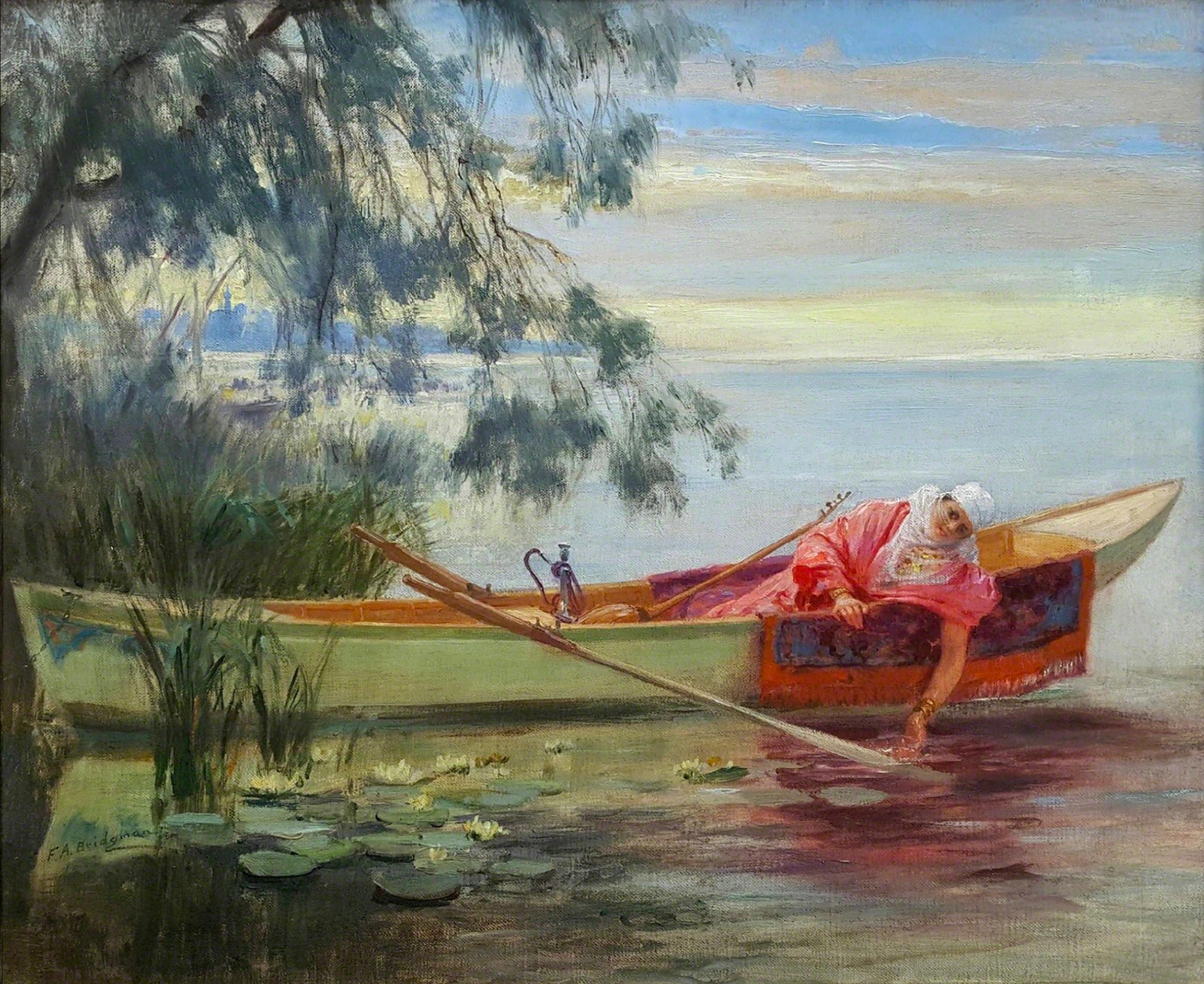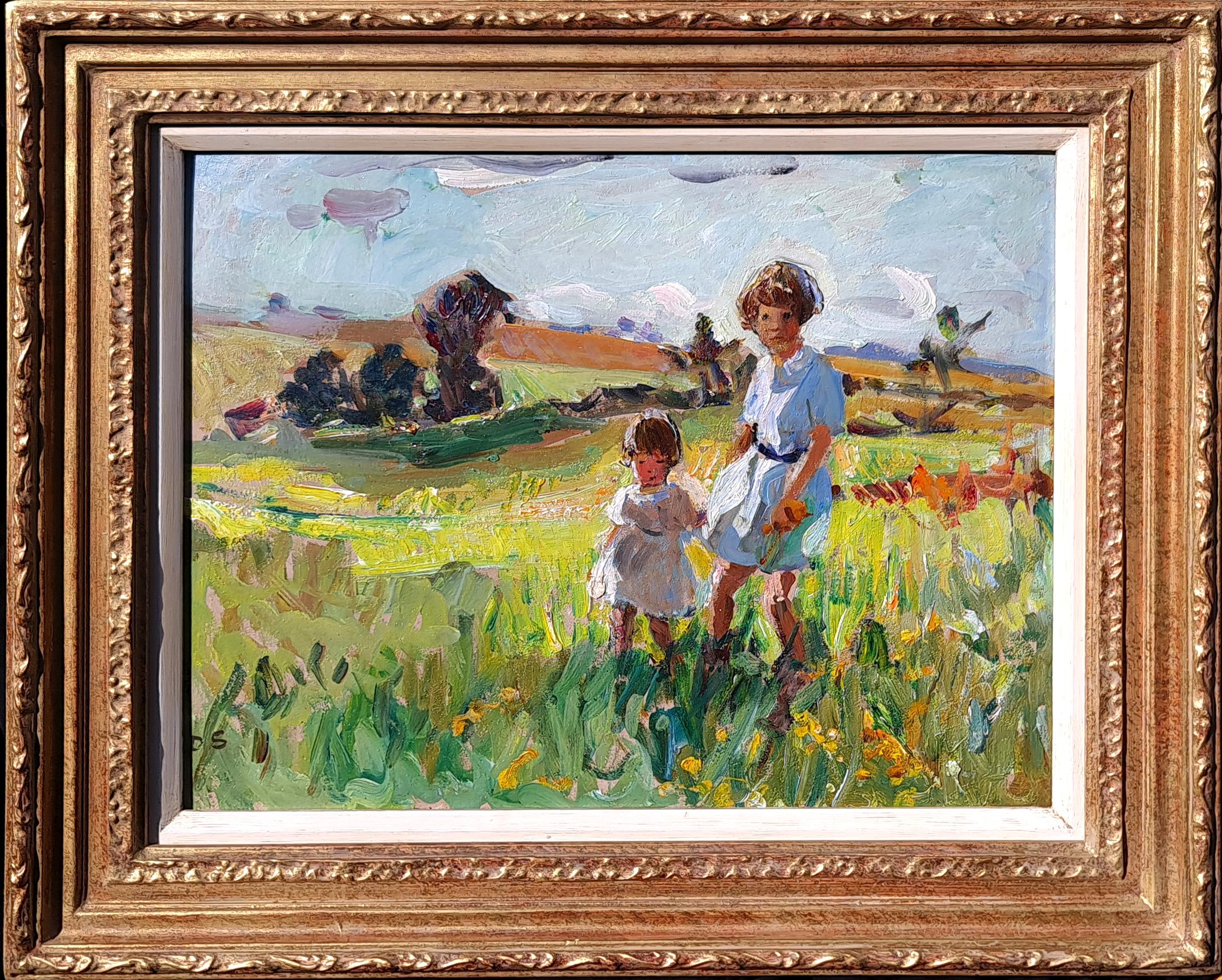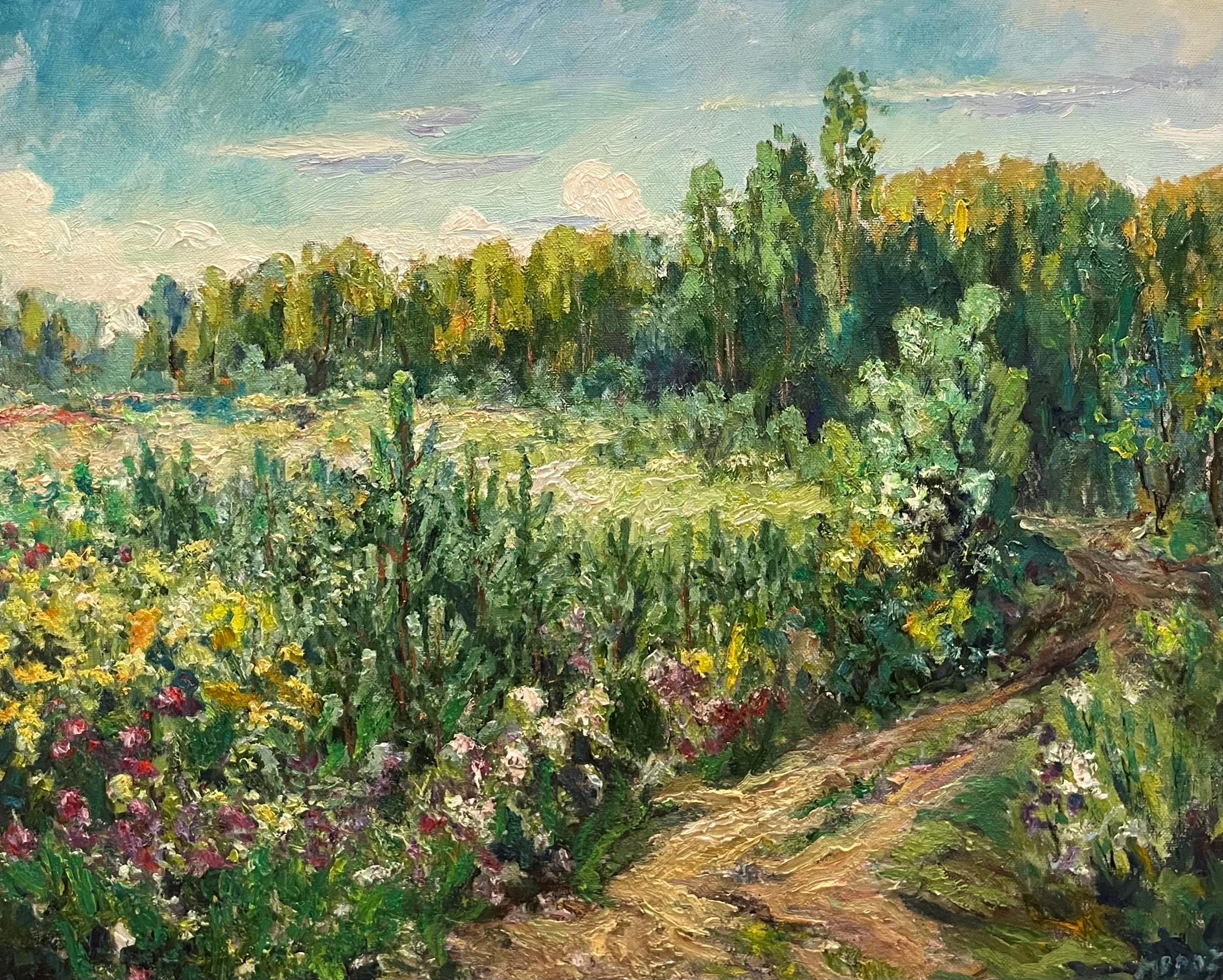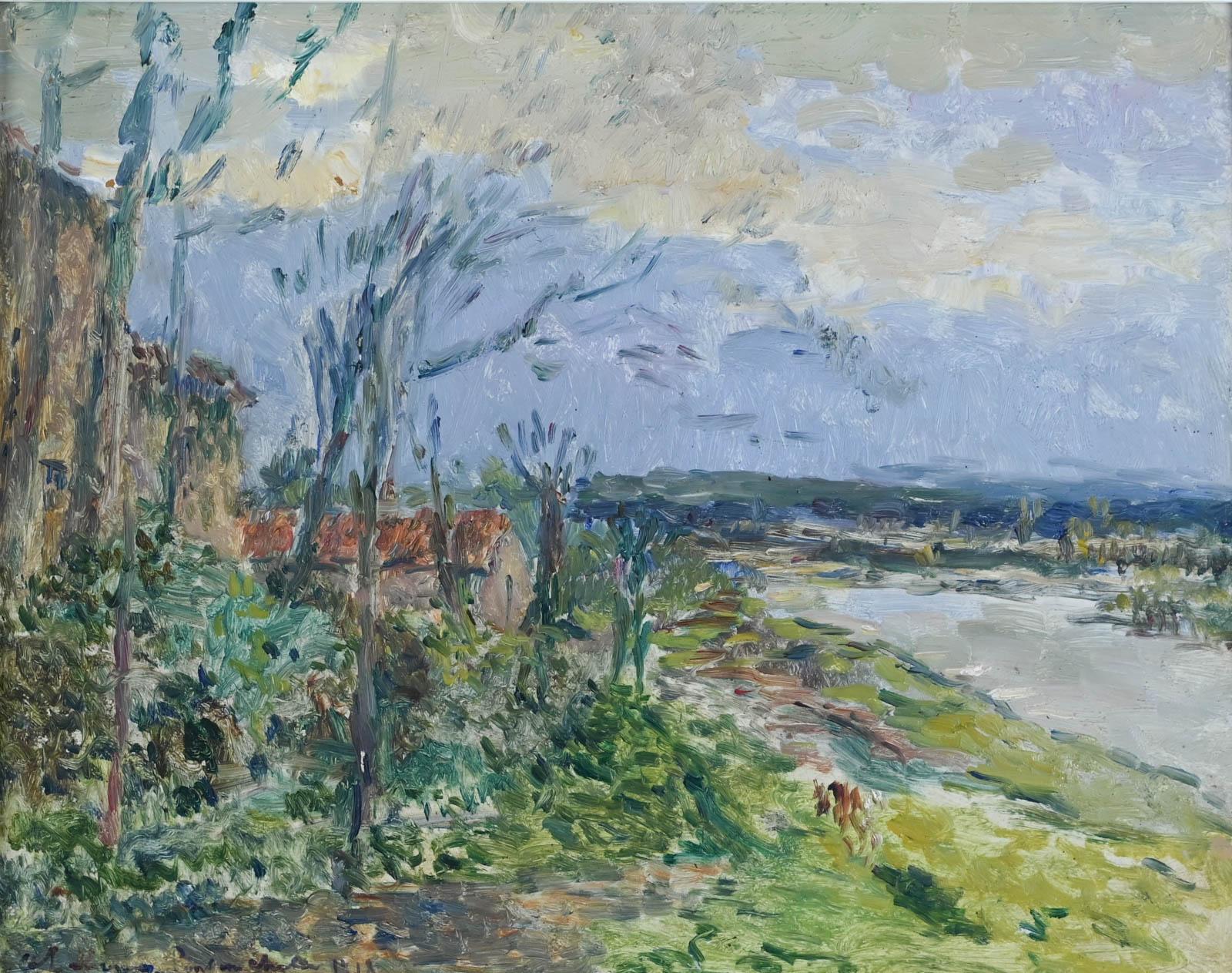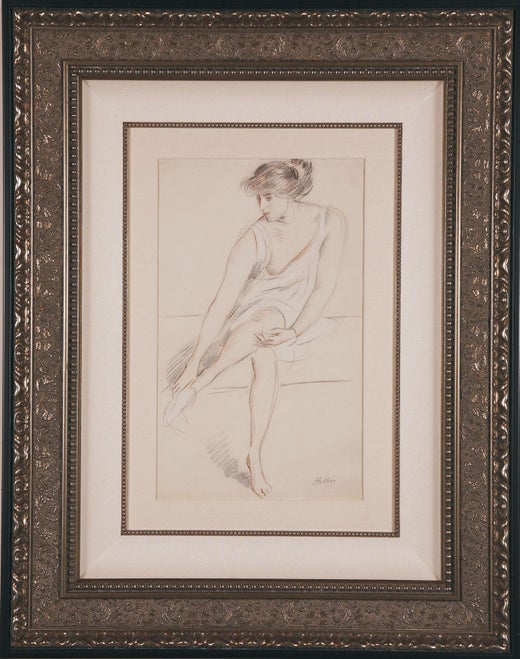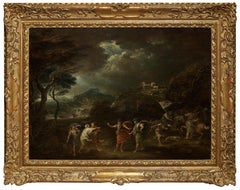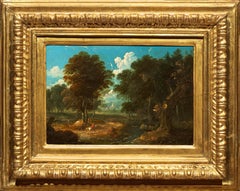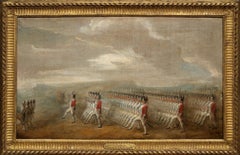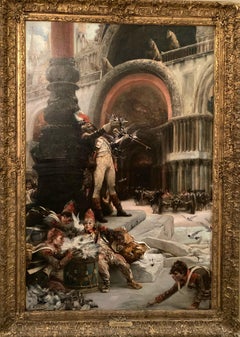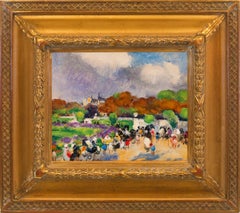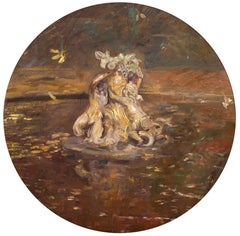
Autumn in Versailles - painting by Paul César Helleu an Impressionist Painter
View Similar Items
Want more images or videos?
Request additional images or videos from the seller
1 of 8
Paul César HelleuAutumn in Versailles - painting by Paul César Helleu an Impressionist PainterCirca 1894
Circa 1894
About the Item
- Creator:Paul César Helleu (1859-1927, French)
- Creation Year:Circa 1894
- Dimensions:Height: 33.66 in (85.5 cm)Diameter: 33.66 in (85.5 cm)
- Medium:
- Movement & Style:
- Period:
- Condition:Signed "Helleu" at the bottom left. It appears in the ‘catalogue raisonné’ under the reference HU3-1128. Provenance: Gaston Palewski Louis XVI giltwood frame : 42.13 "diameter (107 cm) This painting has been restored - CR available upon request.
- Gallery Location:PARIS, FR
- Reference Number:1stDibs: LU156828205942
Paul César Helleu
Rich impression with dramatic drypoint burr and tone no other artist epitomizes the whole atmosphere of elegance and hedonistic pleasure which pervaded Paris society at the first decade of the century as does Helleu. A close friend of Proust and the inspiration for one of the principal characters in La Recherche du Temps Perdu, Helleu’s whole life style echoed the incomparable elegance and flow of his drawing, the sheer style of his art, and his eye for the poses of the beautiful women who were his friends and his patrons. During the 1870’s, Helleu had come to know the painters of Impressionism and also artists Sargent and Whistler who became his special friends and inspiration. By the early 1880’s, he had already developed the quality of expressive sweeping line, which is the essence of his drawing, but in 1885 he was encouraged by Tissot to try working on prints in drypoint. At this time, Tissot had decided, after the death of his lover and model Kathleen Newton, to travel to the Holy Land on an artistic pilgrimage. Having decided he would no longer engrave, he gave Helleu his diamond stylus…a literal and figurative “passing of the baton”. It was in the incision and texture of drypoint that his art was to reach one of its greatest peaks. He had an innate feel for the balance between a lightly curving stroke and the deeply cut highly tonal burr of the strongest drypoint. Around the turn of the century he started to combine drypoint with multi-inking in colors, the areas of color restricted to such touches as the bows on the hats, the hair color or the red of the lips. The plate was drawn at a single sitting, and then the color inks were brushed onto it. The results are some of the most splendid and decorative of all Belle Époque prints.
About the Seller
5.0
Vetted Seller
These experienced sellers undergo a comprehensive evaluation by our team of in-house experts.
Established in 2020
1stDibs seller since 2021
8 sales on 1stDibs
Typical response time: 2 hours
More From This SellerView All
- Macbeth and the Three Witches a Painting on Panel by Francesco ZuccarelliBy Francesco ZuccarelliLocated in PARIS, FRThis painting, created during Zuccarelli's stay in England, represents the decisive moment when Macbeth, together with Banquo, meets the three witches who announce that he will be Ki...Category
1760s Old Masters Landscape Paintings
MaterialsOil, Wood Panel
- Stag Hunting in the Vicinity of Nuremberg by a German Artist Peter von BemmelLocated in PARIS, FRThis small landscape shows a hunting scene: two riders are chasing a stag with their dogs at the edge of a forest. Signed by Peter von Bemmel, it is typical of the production of this...Category
1720s Old Masters Landscape Paintings
MaterialsCopper
- The Parade of Swiss Guards a painting on canvas by Gabriel de Saint-AubinLocated in PARIS, FRIn this painting, Gabriel de Saint-Aubin, the great chronicler of the reign of Louis XV, takes us to the annual parade of the Swiss Guards at the Plaine de...Category
1760s Old Masters Figurative Paintings
MaterialsCanvas, Oil
- The Departure of the Vendéens, an oil on carboard by Pierre-Paul Prud'honBy Pierre-Paul Prud'honLocated in PARIS, FRProvenance: Alfred Stevens Collection Sold by Madame Blanc on May 3, 1876 (number 24 representing The Departure of the Vendéens, FRF 510, bought back by Madame Blanc). Paul Touzet (...Category
1790s Old Masters Figurative Paintings
MaterialsOil, Cardboard
- Italian Landscape with Jack Players, a painting by Gaspard Dughet (1615 - 1675)By Gaspard DughetLocated in PARIS, FRHere Gaspard Dughet offers us an idyllic vision of the Roman countryside. The stages follow one another in a perfectly structured composition, revealing here a lake, there travellers walking along, gradually leading our eye to the blue horizon. But behind its classical composition, this landscape is particularly interesting because of three anthropomorphic details that the artist has hidden, opening the way to a radically different interpretation... 1. Gaspard Dughet, a landscape artist in the light of Poussin Gaspard Dughet was born on June 4th, 1615 in Rome where his father, of French origin, was a pastry cook. He was probably named Gaspard in honour of his godfather Baron Gaspard de Morant, who was, or may have been, his father's employer. His older sister Jeanne married the painter Nicolas Poussin (1594 - 1655) on September 1st, 1630. The young Gaspard was apprenticed with his brother-in-law at the beginning of 1631, which led his entourage to name him Gaspard Poussin. The first preserved works of the painter date from the years 1633-1634 and were painted in Poussin’s studio. Around 1635, Gaspard Dughet became emancipated and began to frequent the Bamboccianti circle. In 1636, he became friends with the painter Jean Miel (1599 - 1656), but also with Pier Francesco Mola (1612 - 1666) and Pietro da Cortona (1596 - 1669). This was also the time of his first trips throughout Italy. The painter, although of French origin, appears never to have visited France. In 1646 he settled permanently in Rome. A recognized painter with a solid book of orders, he remained faithful to landscape painting throughout his life, alternating between cabinet paintings and large decorative commissions, using both oil and fresco. Nailed to his bed by rheumatic fever at the age of 58, he died on May 25, 1675. 2. Discovering an idealized landscape Beyond a relatively dark foreground that takes us into the landscape, we discover a vast bluish horizon: a plateau surrounded by deep ravines advances to the right, overhanging an expanse of water that sparkles below. A road winds through a mountainous mass as if leading us to the fortress that crowns it; another town appears in the distance at the foot of three conical mountains. The composition is rigorous, mineral, and structured by geometric volumes. The various stages in the landscape lead one to the next attracting the eye towards the horizon located in the middle of the canvas. The general impression is that of a welcoming and serene nature. In many places the paint layer has shrunk, or become transparent, revealing the dark red preparation with which the canvas was covered and accentuating the contrasts. Human presence is limited to three jack players, leaning against a mound in the foreground. Their long garments, which may evoke Roman togas, contribute to the timelessness of the scene. Close examination of the canvas reveals two other travellers on the path winding between the rocks. Made tiny by the distance, their introduction in the middle register, typical of Dughet's art, lengthens the perspective. While it is difficult to date the work of a painter who devoted his entire life to the representation of landscapes, it is certain that this painting is a work from his later years. The trees that occupied the foreground of his youthful compositions have been relegated to the sides, a stretch of water separates us from the arid mountains counterbalanced by two trees represented on the opposite bank. The introduction of this stretch of water in the middle of the landscape betrays the influence of the Bolognese and in particular of the Dominiquin (1581 - 1641) A number of similarities with a drawing in the British Museum might suggest a date around 1656-1657, since, according to Marie-Nicole Boisclair , it has been compared with the Prado's Landscape with the Repentant Magdalene, painted at that period. 3. Three amazing anthropomorphic details While some late Renaissance landscapes offer a radical double reading, allowing one to see both a face or a human body behind the representation of a landscape, it seems interesting to us to hypothesize that Gaspard Dughet had fun here by slipping in a few details that, taken in isolation, evoke human or animal figures. We will give three examples, looking closely at a cloud, the trunk of a broken tree and the top of a cliff. The main cloud could thus evoke a Christ-like face or that of an antique god...Category
1650s Old Masters Landscape Paintings
MaterialsOil
- Virgin and Child, a paiting by David Teniers the Younger after Palma VecchioBy David Teniers the YoungerLocated in PARIS, FRProvenance: Dukes of Marlborough Collection, Blenheim Palace until its sale at Christie's London on 26 July 1886 (lot 172) English private collection until its sale at Christie's London on 11 December 1992 (lot 363) Erna Weidinger Collection (1923 - 2021) - Austria Literature : Georg Scharf - A list of the pictures in Blenheim Palace - Catalogue raisonné Part 2 - London 1862 (page 166 - number 199 "after Palma Giovane") Charles Davies...Category
1750s Old Masters Figurative Paintings
MaterialsOak, Oil
You May Also LikeView All
- 'Agay, le château et le Sémaphore'. Oil on canvas. Signed.By Armand GuillauminLocated in Paris, FR'Agay, le château et le Sémaphore'. Oil on canvas. +/- 1922 Signed lower right Measurements : 60 x 73 cm. This painting will be recorded in the second volume of the Catalogue Raisonn...Category
1920s Impressionist Landscape Paintings
MaterialsOil
- "Le Dompteur de Pigeons" (ex. Christie's) - Large Antique Impressionist PaintingBy Georges Jules Victor ClairinLocated in New Orleans, LAA large, spectacular, absolutely splendid painting by noted French painter Georges Clairin, which appeared for auction at Christie's in 2004 (see photo...Category
Late 19th Century Impressionist Landscape Paintings
MaterialsOil
- "Autumn Afternoon in Luxembourg Garden"By Martha WalterLocated in Lambertville, NJJim’s of Lambertville is proud to offer this artwork by: Martha Walter (1875-1976) Born in Philadelphia in 1875, Martha Walter attended Girls’ High School followed by the Pennsylva...Category
Early 20th Century American Impressionist Landscape Paintings
MaterialsOil, Board
- "The Auction"By Robert SpencerLocated in Lambertville, NJJim’s of Lambertville is proud to offer this artwork by: Robert Spencer (1879 - 1931) One of the rarest and most important artists among the New Hope School, Robert Spencer was bor...Category
1910s American Impressionist Landscape Paintings
MaterialsOil, Canvas
- "Under the Large Striped Umbrella on a Foggy Day"By Martha WalterLocated in Lambertville, NJJim’s of Lambertville Fine Art Gallery is proud to offer this piece by Martha Walter (1875 - 1976). Born in Philadelphia in 1875, Martha Walter attended Girls’ High School followed by the Pennsylvania Academy of the Fine Arts. It was at the Academy that Walter’s artistic talent was discovered. An admiring instructor by the name of William Merritt Chase took young Martha under his wing, giving her both inspiration and direction. She additionally enrolled with Chase at his summer school in Shinnecock, Long Island and in 1903, was awarded the Cresson Traveling Scholarship by the Pennsylvania Academy. This sent Martha Walter on travels to France, Italy, Spain, and Holland, where she attended the Grand Chaumiere and the Academie Julian in Paris. Afterwards, she established a studio on the Rue De Bagneaux in France with several other American women artists...Category
1910s American Impressionist Landscape Paintings
MaterialsBoard, Oil
- Washers on the banks of La TouquesBy Eugène Louis BoudinLocated in Belgravia, London, London'Washers on the banks of La Touques' By Eugène BOUDIN (French 1824-1898) Oil on panel: 12 x 16.25 inches Framed size: 15.25 x 19 inches On the reverse of the frame: Old label beari...Category
20th Century Impressionist Landscape Paintings
MaterialsOil, Panel
Recently Viewed
View AllMore Ways To Browse
Tissot Mother Of Pearl
Wooden Rosary Beads
Pearl Basin
Antique Whistle Necklace
Antique Rosary Beads Rosaries
Antique Rosary Necklace
Blanche Hoschede
Blanche Hoschede Monet
Rosary Large Beads
Gustave Singer
Fountain Petite
Edouard Du Temps
Wooden Bead Necklace
Outdoor Garden Fountain Water
Antique Rosary Beads
Golden Whistle
Monet Glass Necklace
Jean Monnet






